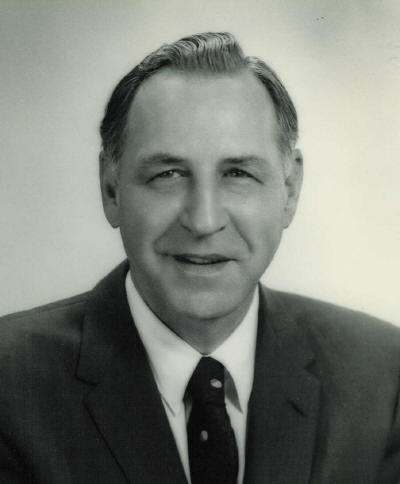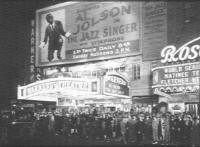|
|
|||||||||||

|
|
||||||||||
John hilliard
|
|||||||||||
|
|
|||||||||||
|
|
Hilliard was born in 1901 at Wyndmere, North Dakota. He received a B.S. in physics at Hamlin University in St. Paul Minnesota in 1925 and a B.S.E.E. at the University of Minnesota. He began work on a M.E.E., but left in 1928 before completing that degree to take a position with United Artists in Hollywood.
This was at the very beginning of the movie sound industry. The first full-length talking picture, "The Jazz Singer," had been released the year before and there was a mad rush by all studios to develop sound motion pictures. Hilliard was selected from a group of engineers trained in physics, engineering and acoustics to work at United Artists Studios. Hilliard was placed in charge of the recording operations for UA's first sound picture -- "The Coquette". He was responsible for all aspects of recording, monitoring and sound editing. Western Electric supplied most of the equipment used in the recording process, but they had no experience in its application. Out of necessity, Hilliard was forced to develop many recording techniques that later became industry standards. In 1933, Hilliard transferred to MGM's sound department. His first task was a systematic review and redesign of all recording amplifiers. The review was intended to address the issue of phase shift in the recording circuit. This shift was in the order of 1500 degrees which significantly distorted speech. The solution was to use transformers with very high self inductance and relatively large coupling capacities. Transformers with these capabilities were developed by E.B. Harrison of the Lansing Manufacturing Company and this became the original connection to James B. Lansing.
That connection subsequently led to their most successful collaboration - the Shearer Project. That project involved the design of a new, two-way loudspeaker system for theatre use under the direction of Douglas Shearer, head of the Sound Department at MGM. Hilliard was the project manager for this system and was responsible for the overall concept. Lansing Manufacturing was responsible for the development of the drive units. The end result was a loudspeaker system that became the industry standard and would go on to win a technical award from the Academy of Motion Picture Arts and Sciences. Hilliard stayed at MGM until 1942. In that year, he joined Dr. John Blackburn at MIT to undertake research on radar development as part of the war effort. That work led to his employment at Altec Lansing to participate in their contribution to the Marine Airborne Detection program. Hilliard was an acquaintance of George Carrington, the President of Altec Lansing, and its forerunner, the Altec Service Corporation. It was Hilliard who recommended to Carrington the purchase the Lansing Manufacturing Company in 1941, when Altec was looking to add a manufacturing capability to their service arm.
Hilliard shifted back to acoustic work at Altec in 1944. That year, he collaborated with James B. Lansing in developing the one of the most famous loudspeaker systems of all time - the Voice of the Theatre. In 1946, Jim Lansing left Altec to found Lansing Sound Inc whereupon Hilliard took over Lansing's vacated position as Vice President of Engineering. He would hold that position until 1960. During this tenure at Altec Lansing, Hilliard was responsible for the development of many significant sound products. Just a brief sampling includes the refined 604B, sectoral horns, the "Lipstik" condenser microphone, and numerous amplifier and crossover designs. In 1960, Hilliard became director of the LTV Western Research Center, which was a branch of Altec Lansing's parent company. At LTV, he considerably broadened his field of work to include research on sonic booms, highway noise, hearing conservation and gun silencing. He left in 1970 to undertake a decade-long career in consulting that focused on noise studies and architectural acoustics. The significance of John Hilliard's contributions to the science and industry of acoustics is best represented by his receipt of the of the John H. Potts Award from the Audio Engineering Society (AES). The AES is the preeminent association of audio professionals and the John H. Potts Award is its highest accolade. It is given "in recognition of outstanding achievements, sustained over a period of years, in the field of Audio Engineering" While most recipients were awarded this prize after a lifetime of effort, John Hilliard received it in 1961, while still in the midst of his storied career.
© 2000 Don McRitchie
|
||||||||||













